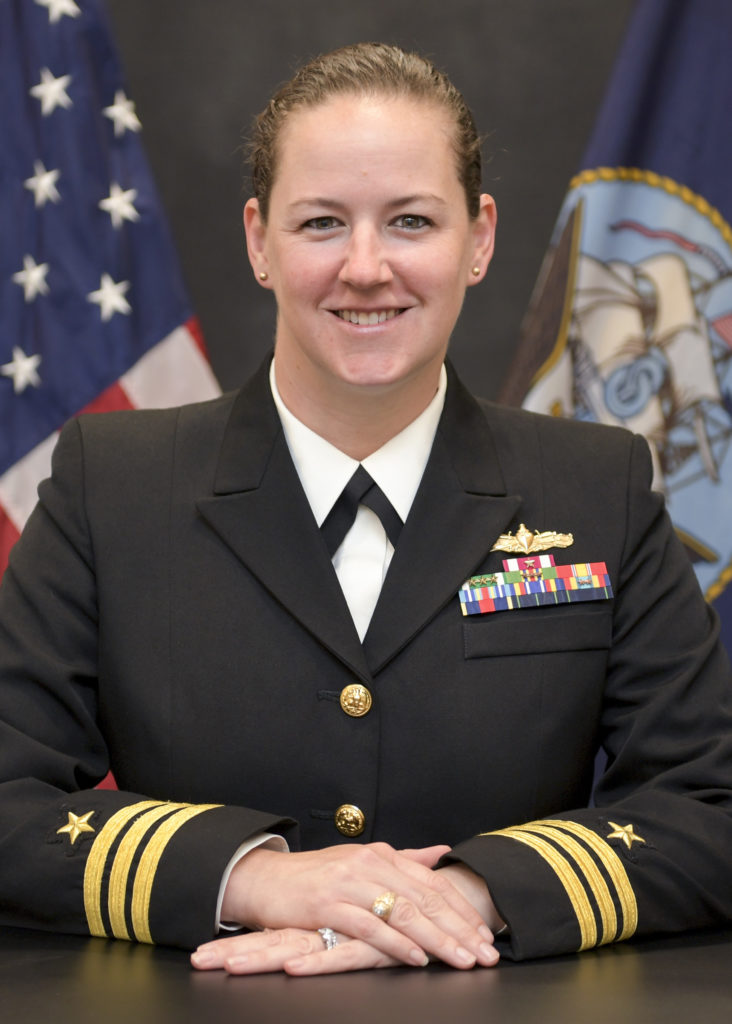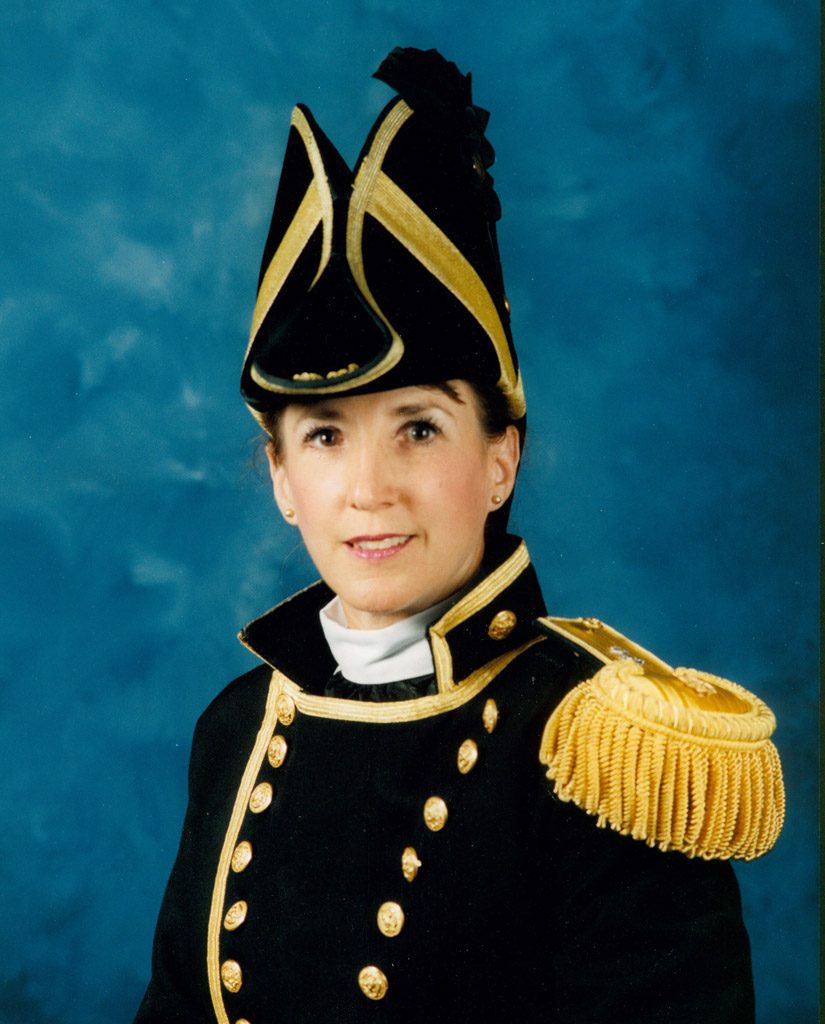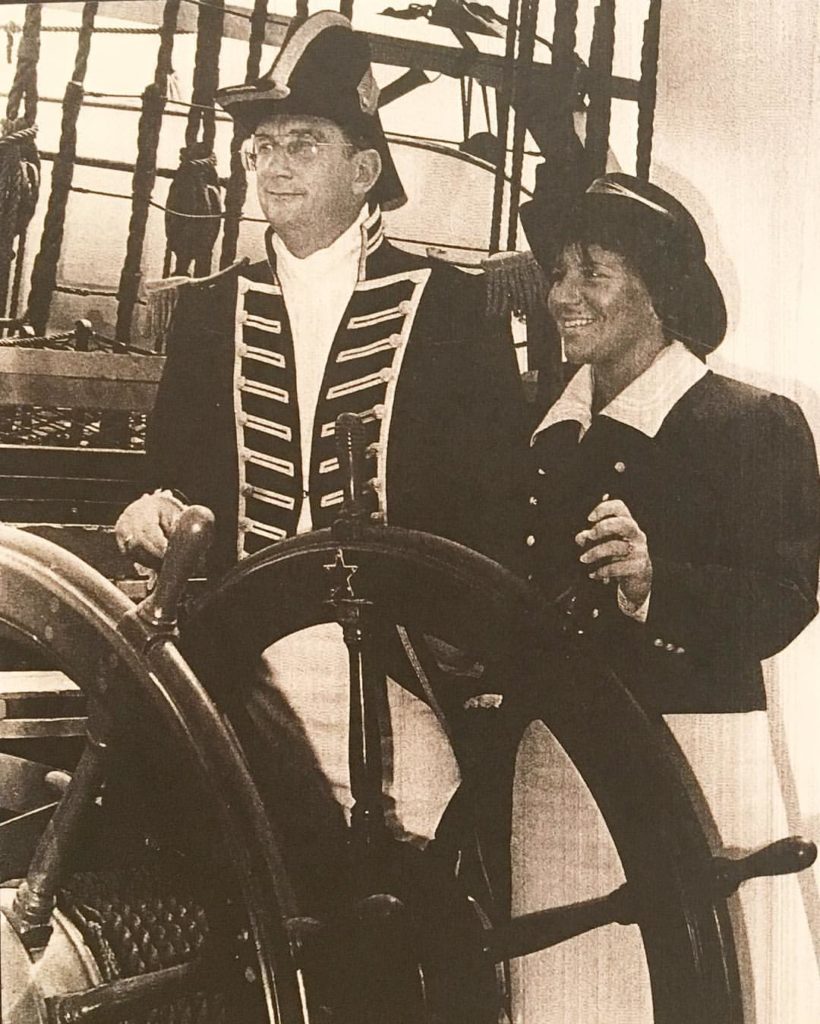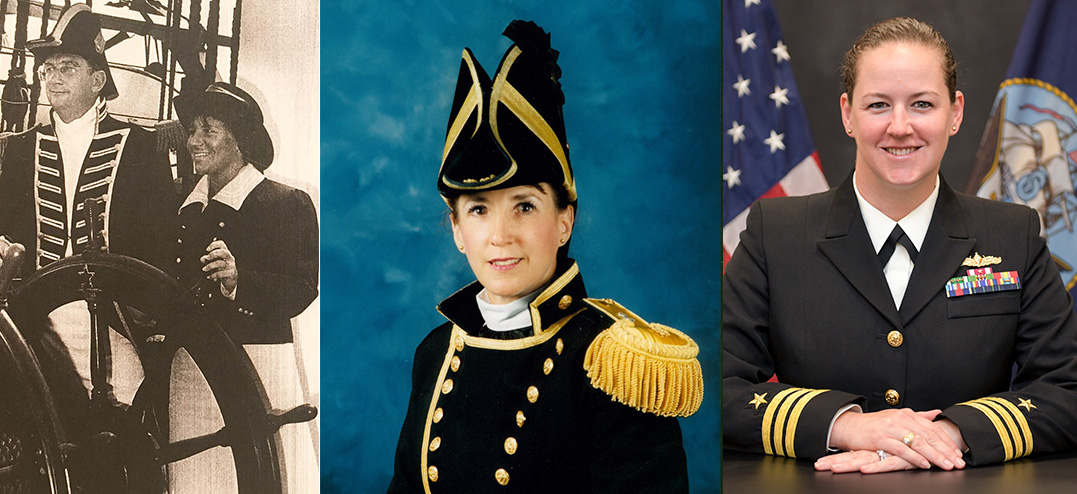When Commander Billie June (BJ) Farrell assumes command of USS Constitution on January 21, 2022, she’ll be surmounting one of the remaining hurdles for women in the United States Navy. Farrell is the first female commanding officer of USS Constitution in the ship’s 224-year history.


“I think the Navy is a reflection of society,” Bloom said when she learned of Farrell’s command. “It might even be a reflection of the society 20 years ago. Women were CEOs of businesses long before the first woman was CO on a navy ship.”
In many ways, Farrell represents a new generation of women in the Navy whose opportunities and career paths are very different from those available to women like Wilamowski and Bloom. Before 1994, women were not allowed to serve on combatant ships, or serve in combat in any capacity in the military. A 2004 graduate of the U.S. Naval Academy, Farrell has built her career as a surface warfare officer, serving on several guided missile cruisers, including most recently as executive officer of USS Vicksburg.
“We’re completely different generations,” said Bloom, who served as the Executive Officer of Constitution from 1994 to 1997. “By the time women could go to sea, I was too old to go to sea. I was relegated to shore duty. Her experience and my experience are totally different.”
Bloom, who retired as lieutenant commander in 1997 following her service on Constitution, had built a navy career in that included working in intelligence, administration, personnel, and other shore duty assignments. Her last assignment before arriving at Constitution was assistant director of the Women’s Policy Office under Admiral Jeremy Boorda, then the director of Naval Personnel. In that position, Bloom worked with the Navy and members of Congress to lift the Combat Exclusion Policy that prevented women from serving on combatant ships. The policy was fully lifted on January 24, 2013. Bloom also helped establish policies that opened the door for women like Farrell to pursue careers on warships at sea.


In addition to the new commanding officer, about one-third of Constitution’s 80-member active duty crew are women — a sharp rise from the 11 women who were on the crew with Bloom in 1997 when Constitution set sail to celebrate the ship’s 200th anniversary.
Being in the national eye as the first captain of Constitution gives Farrell some unique opportunities, Bloom said. By highlighting the various roles of women serving on Constitution, Bloom believes Constitution can play a strong role in attracting more women to naval service.
When Rosemarie Lanam (now Wilmaowski) enlisted in the U.S. Navy in 1980, serving on board Constitution was certainly not something she had considered. Looking back on her initial enlistment, Wilamowski said she didn’t like the job opportunities she had at the time and chose the Navy because, “there was just something about the uniform. I liked it.” She and a friend went to enlist together, but her friend chose not to go. Wilamowski served two enlistments as a yeoman, an administrative rating that is one of the earliest roles women had in the U.S. Navy. During World War I, the need for administrative staff prompted the Navy to allow women to serve as yeomen on shore assignments.


“He was determined it was to be equal for women to serve,” Wilamowski said. Despite Brown’s enthusiastic support, Wilamowski faced pushback from other members of the crew who didn’t want a woman on board.
“I got along great with my office, but as a command, the guys all griped,” Wilamowski said. “They didn’t want a female there. They would say there were no females there in 1812; if she’s going to be one of us, she has to wear the same uniform; she can’t wear a bra. A lot of stupid stuff like that.”
Despite the discrimination, Wilamowski said she enjoyed her time on Constitution and even became friends with some of the male yeomen. “I look back and think what an amazing ship it is.”
In the years since, her former crewmates have changed their attitude about her role. At a reunion, she noted, they made sure she was counted as one of them. “The other guys over time have accepted me. Deep down they were good. They were just young and full of testosterone.”
Wilamowski left the Navy in 1987, following her duty on Constitution. At the time, she was having a difficult time in her marriage, which later ended, and she wanted to go home to her family in Buffalo, New York, rather than face being transferred to a new duty station alone. It was a decision she ended up regretting.
“I really was not prepared for the private sector,” she said. “You’re not a family. People stab you in the back. In the military, you’re a family; you’re in it together.”
Wilamowski said being excluded from serving on combatant ships was never a concern for her, as it was not something she was interested in. “I had the opportunity to be on that ship [Constitution],” she said. “That fulfilled me.”
Wilamowski and Bloom are among the pioneering women on Constitution and in the broader U.S. Navy. Their courage and determination in the face of institutionalized exclusion and discrimination against women, and their work to break down those barriers, made it possible for a woman to finally become Constitution’s commanding officer decades later.
The first commanding officer of any U.S. Navy ship was Darlene Iskra, who assumed command of USS Opportune in 1990. Opportune was a salvage ship, and Iskra had come up through the ranks as a navy diver, an unusual role for women at the time. As a support vessel, Opportune did not count as a combatant ship, which women were still excluded from until 1994. The first female commanding officer of a U.S. Navy combatant ship would not come until 1998, when Commander Maureen Farren took command of the dock landing ship, Mount Vernon. Following her navy career, Iskra went on to get a PhD in Sociology and wrote two books providing guidance for women serving in the military. In 2022, Commander BJ Farrell joins this list as the first female commanding officer of America’s Ship of State.
* * *
This article has been made possible by a Sustaining the Humanities through the American Rescue Plan (#SHARP) grant from the National Endowment for the Humanities: Democracy demands wisdom. Any views, findings, conclusions, or recommendations expressed in this article do not necessarily represent those of the National Endowment for the Humanities.
The Author(s)
Carl Herzog
Public Historian, USS Constitution Museum
Carl Herzog is the Public Historian at the USS Constitution Museum.
